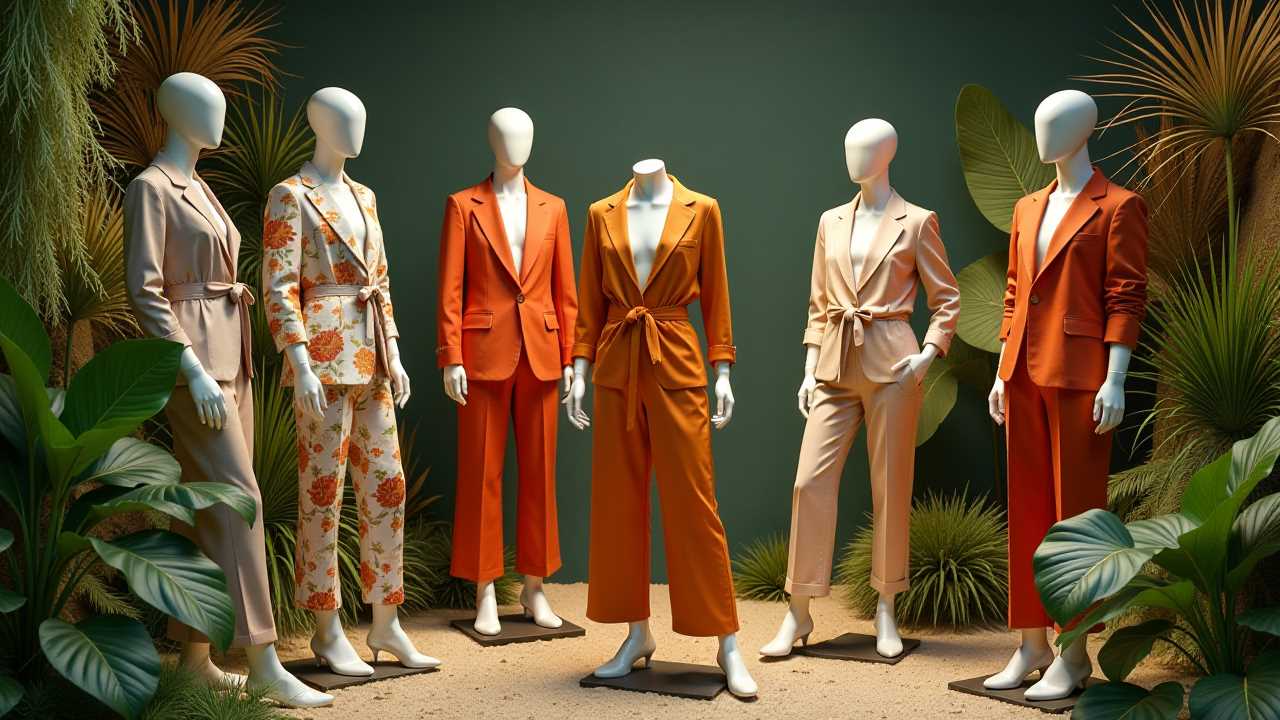Fashion
What Are the Top Sustainable Materials for 2024 Fashion?
Sustainable fashion in 2024 emphasizes eco-friendly materials such as recycled polyester and organic cotton. Recycled polyester, made from plastic waste, helps

In 2024, sustainable fashion focuses on materials like recycled polyester, organic cotton, Tencel™ lyocell, hemp fabric, and Piñatex®. Recycled polyester utilizes plastic waste, cutting pollution and offering durability. Organic cotton is grown without harmful chemicals, contributing to better soil and biodiversity. Tencel™ lyocell, made from wood pulp, is biodegradable and produced in an eco-friendly manner. Hemp fabric is not only durable and biodegradable but also requires minimal water. Finally, Piñatex®, derived from pineapple leaves, provides a versatile, cruelty-free leather alternative. These materials can transform your wardrobe while promoting eco-conscious choices. Discover more about their benefits next!
Recycled Polyester
Recycled polyester is transforming the fashion industry, offering a sustainable alternative to traditional materials. By using plastic waste, like bottles, brands help reduce pollution and conserve resources.
When you wear clothing made from recycled polyester, you’re supporting a circular economy that minimizes environmental impact. This material’s durability guarantees your clothes last longer, reducing the need for frequent replacements.
Plus, it often retains the same softness and quality as virgin polyester, proving that sustainability doesn’t mean sacrificing comfort. When shopping, look for labels that highlight recycled content.
Choosing recycled polyester not only makes you feel good about your purchase but also contributes to a safer planet. Every small choice can lead to significant change in the industry, so consider this option next time you shop.
Organic Cotton
As the fashion industry increasingly adopts sustainable practices, organic cotton emerges as a popular choice for eco-conscious consumers. This natural fiber is grown without synthetic pesticides or fertilizers, making it a safer option for both you and the environment.

When you choose organic cotton, you’re supporting farming practices that promote biodiversity and healthier soil. Additionally, organic cotton is often softer and more breathable, providing comfort in your wardrobe.
Look for certifications like GOTS (Global Organic Textile Standard) to verify the authenticity of your purchases. By opting for organic cotton, you’re not only investing in quality clothing but also contributing to a healthier planet and safer farming communities.
It’s a responsible choice that aligns with your values and protects what matters most.
Tencel™ Lyocell
In recent years, Tencel™ Lyocell has gained traction as a go-to sustainable fabric in the fashion industry. This innovative material, made from sustainably sourced wood pulp, offers a safe and eco-friendly alternative to conventional fabrics.
You’ll appreciate that Tencel™ is produced in a closed-loop process, meaning that 99% of solvents used are recycled and reused, minimizing waste.
When you choose garments made from Tencel™, you’re not just opting for softness and breathability; you’re also supporting a safer environment. The fabric is biodegradable, reducing long-term landfill impact.
Plus, Tencel™ Lyocell’s natural moisture-wicking properties keep you comfortable throughout the day. By opting for Tencel™, you’re making a conscious choice for your wardrobe and the planet’s health.

Hemp Fabric
Hemp fabric stands out as another sustainable choice for your wardrobe, complementing the eco-friendly benefits of Tencel™ Lyocell. This natural fiber isn’t only durable but also biodegradable, meaning it won’t linger in landfills for years.
When you choose hemp, you’re supporting a crop that requires minimal pesticides and water, making it safer for the environment and farmers. Plus, hemp fabric is breathable and hypoallergenic, ideal for sensitive skin.
Its versatility allows it to be used in various styles, from casual wear to more sophisticated pieces. By incorporating hemp into your fashion choices, you’re not just making a statement; you’re prioritizing safety and sustainability for yourself and the planet.
It’s a fabric that truly aligns with conscious living.
Piñatex®
Piñatex® offers a groundbreaking alternative to traditional leather, made from the fibers of pineapple leaves. This innovative material not only reduces waste by utilizing agricultural byproducts, but it also provides a cruelty-free option for fashion lovers who want to make a safer choice.
When you choose Piñatex®, you’re supporting sustainable farming practices and reducing environmental impact. It’s breathable, lightweight, and surprisingly durable, making it suitable for various fashion applications, from bags to footwear.
Plus, its unique texture adds a fresh look to any wardrobe. As you investigate sustainable fashion in 2024, consider Piñatex® as a stylish and responsible choice that contributes to a healthier planet. Your decision can help pave the way for a more eco-conscious future.

Frequently Asked Questions
How Do Sustainable Materials Impact Fashion Industry Emissions?
Sustainable materials significantly reduce fashion industry emissions by minimizing resource extraction and waste. When you choose eco-friendly fabrics, you support lower carbon footprints, promote ethical practices, and contribute to a healthier planet for future generations.
Are Sustainable Materials More Expensive Than Traditional Fabrics?
You might find that sustainable materials carry a higher price tag initially, but think of it as investing in a brighter, healthier future. Over time, their durability and eco-friendliness often lead to cost savings.
What Certifications Should Sustainable Materials Have?
When choosing sustainable materials, look for certifications like GOTS, OEKO-TEX, and Fair Trade. These guarantee you’re selecting safe, environmentally-friendly fabrics that support ethical practices, making your choices not just stylish but responsible too.
How Can Consumers Identify Sustainable Fashion Brands?
To identify sustainable fashion brands, you should look for transparency in sourcing, certifications like GOTS or Fair Trade, and ethical practices. Research online, read labels, and support companies that prioritize environmental and social responsibility.
What Role Do Consumers Play in Promoting Sustainable Fashion?
When you choose to buy from brands like Stella McCartney, you’re supporting sustainable practices. Your choices encourage companies to prioritize eco-friendly methods, creating a safer environment for everyone. You hold the power to drive change.

Hey there! I’m William Cooper, your go-to guy for all things travel at iMagazineDaily. I’m 39, living the dream in Oshkosh, WI, and I can’t get enough of exploring every corner of this amazing world. I’ve got this awesome gig where I blog about my travel escapades, and let me tell you, it’s never a dull moment! When I’m not busy typing away or editing some cool content, I’m out there in the city, living it up and tasting every crazy delicious thing I can find. Join me on this wild ride of adventures and stories, right here at iMagazineDaily. Trust me, it’s going to be a blast! 🌍✈️🍴







